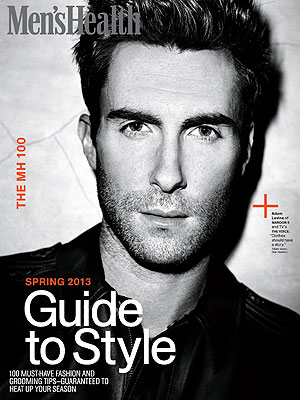Last Updated, Saturday, 10:17 a.m. While using Twitter to narrate events in Tahrir Square on Friday, people in Egypt described tires burning in the street, protesters blocking traffic and hurling rocks, and police officers launching tear gas in an effort to break up crowds that had gathered to protest against the Muslim Brotherhood and the country’s new Islamist president.
Many of the actions described on Friday appeared to hew to a script that has become familiar over the past two years, but some in the crowds of protesters appeared to be using new tactics, dressing from head to toe in black, covering their faces with bandannas or kerchiefs and brandishing black flags as they skirmished with security forces.
Egypt’s newly formed Black Bloc anarchist group had members act as Tahrir security, even imitating new CSF uniforms: http://t.co/czWd5Je8
— Ghazala Irshad (@ghazalairshad) 25 Jan 13
“Asked one of them who they are they said we don’t talk to media but we are black bloc,” wrote the British-Egyptian journalist Sarah Carr, adding that a member of the group had “mentioned anarchism.”
Shubra march is full of young men wearing wrestling masks.
— أبو كار (@Sarahcarr) 25 Jan 13
Saw a winning ski mask and spectacles combination. We’re banned from photographing them.
— أبو كار (@Sarahcarr) 25 Jan 13
Asked one of them who they are they said we dont talk to media but we are black bloc. Mentioned anarchism.
— أبو كار (@Sarahcarr) 25 Jan 13
An article filed on Thursday by The Associated Press reported the presence of a “previously unknown group calling itself the black block.” The article continued, “Wearing black masks and waving black banners, it warned the Muslim Brotherhood of using its ‘military wing’ to put down protests.”
Although largely new in Cairo, the term “black bloc” has been used for years in the United States and Europe to describe a tactic commonly used by anarchists and anticapitalists during large-scale political demonstrations that occasionally devolve into street fights with the authorities.
Participants in the bloc typically dress in black to foster a sense of unity and to make it difficult for witnesses to differentiate between individuals. Members of the bloc often blend in with larger groups of protesters, then break away, linking arms as they rush down streets.
In the United States, at least, black bloc members usually eschew violence against people but have few compunctions about damaging property.
The tactic received attention during the 1999 protests in Seattle against the World Trade Organization, when youths dressed in black broke windows and spray-painted graffiti on buildings.
In St. Paul, during the 2008 Republican National Convention, black bloc members roamed through the city smashing bank windows and using hammers to batter a police car.
It is unclear whether there are any connections between American and Egyptian black bloc participants, but the site anarchistnews.org posted a message about occurrences in Cairo, quoting the blog Even If Your Voice Shakes.
Last night, anarchism left the graffitied walls, small conversations, and online forums of Egypt, and came to life in Cairo, declaring itself a new force in the ongoing social revolution sparked two years ago with multiple firebombings against Muslim Brotherhood offices. Later, the government shutdown the “Black Blocairo” and “Egyptian Black Bloc” Facebook pages, but they were soon re-launched.
The site went on to say that Egyptian anarchists had firebombed the Shura Council.
As my colleague Robert Mackey reports, an Egyptian journalist, Sarah El Sirgany, wrote on Twitter, “Vendors tell me it was the Black Block group that attempted to storm the Ikhwan Online building sparking the fight.”
Later, she added, “Now those who had continued the fight are heading to Tahrir, flag of Black Block flying high.”
This week, a video was uploaded to an Egyptian YouTube channel titled “Black Bloc Egypt.” Accompanied by driving music the video shows masked people marching while holding aloft black banners, a black flag with an anarchy symbol and an Egyptian flag.
Egyptian journalists and bloggers wondered what to make of the black bloc in Egypt. In a place where sexual assaults and gropings remain common, one journalist, Ghazala Irshad, reported from Cairo that the “self-proclaimed” anti-Muslim-Brotherhood militia “has female members.”
Egypt’s new Black Bloc (self-proclaimed anti-MB militia) has female members too–just saw one running wearing niqab & angle-length skirt.
— Ghazala Irshad (@ghazalairshad) 25 Jan 13
The activist bloggers Gigi Ibrahim, Adel Abdel Ghafar, Bassem Sabry and Egyptocracy wrote that they were troubled by the development.
This black bloc is just trouble even if they have good revolutionary intentions but it definitely will be used against the revolution
— Gigi Ibrahim (@Gsquare86) 25 Jan 13
Black Bloc: anarchist revolutionaries or 18 year olds who live with their moms & wear black masks thinking life is a video game ? #egypt
— Adel Abdel Ghafar (@dooolism) 25 Jan 13
The formation of a group like the “Black Bloc” is a natural result of events in #Egypt. I expect more groups like that, which worries me.
— Bassem Sabry باسم (@Bassem_Sabry) 25 Jan 13
Black Bloc might have started by youth trying to fight the unjust regime, but they could easily be infiltrated and tarnished. #Egypt
— Egyptocracy (@Egyptocracy) 26 Jan 13
This post was revised after publication to reflect comments on Twitter by the journalist Ghazala Irshad, who asked us to clarify that she was merely reporting on the presence of the Black Bloc, not admiring them as we first reported.
Additional reporting was contributed by Robert Mackey.











